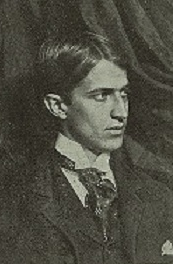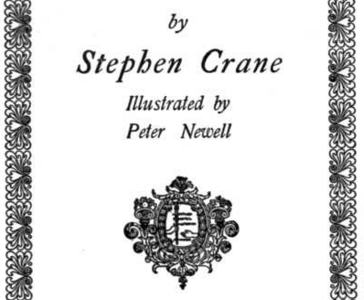JASON LI goes silver
Congratulations to Jason Li for his silver Stephen Crane essay!
Congratulations to Jason Li for his silver Stephen Crane essay!

However, Gullason does say that “Crane had a fanatic love for the truth …”. There is no doubt that Crane is reporting the actual facts correctly, as his work does not conflict with his associates at the scene, like Davis’s. Gullason even notes that while other reporters attributed wounds on dead Americans to machetes wielded by brutal Spaniards, Crane told the less sensational truth that they were simply rifle wounds in the normal tradition of battle. Crane’s seemingly racist tendency brings up the other major relevant PEJ principle, the 9th, which states: “Its practitioners must be allowed to exercise their personal conscience.” The principle was designed by the PEJ to address reporters living in fear of their editors not approving of their sense of morality. Crane has the opposite problem, as he shamelessly spits out his opinion, which itself is immoral to modern standards.

Apart from studying who Crane affected, studies have been conducted to see who affected Crane. After much research, analysts concluded that Crane’s creed, the origin of his writing style, was, unlike other authors, seemingly, independently realized. The only traceable impact an author had on Crane was Rudyard Kipling and his novel The Light that Failed. S. C. Osborn notes that Crane’s famous image at the end of Chapter IX in The Red Badge of Courage, “The sun was pasted against the sky like a wafer,” is also in Kipling’s The Light That Failed. In The Light that Failed, a young boy called Dick Heldar grows up to become a successful artist thanks to his illustrations on wars for the London newspapers. Osborn concludes that Crane’s early works have strong reflections of Kipling’s work, such as the “impressionistic ‘modern’ imagery, the sententious, often flippant, dialogue, and a keen sense of the ironic”. Crane was equally affected by the problems of his time. For example, when Crane visited the slums of New York and saw unfortunate people in poverty and suffering along, and he decided to write about it in Maggie: A Girl of the Streets. However, an even bigger real world problem conveyed in Crane’s work was the problem of racism and how it was reflected in The Monster and The Whilomville Stories.
Crane’s The Third Violet is essentially a love story between an artist and a girl with a higher social status than he. Situated in a peaceful rural area where vacationers can enjoy hikes in the woods and picnics near streams and rivers, The Third Violet has been criticized as a work that is confusing, and too short, and “were it not for the dog and one or two touches of nature, we would not like it at all” (unsigned). This speaks volumes about the critic’s opinion on this particular story. He or she plainly disliked it.
Stephen Crane – The Natural World Stephen Crane is one of the most celebrated authors in the United States. He created masterpieces as detailed and realistic as they were recognizable. He was skilled in many types of description, such as his masterful depiction of street life apparent in Maggie: Girl of the Streets, Read more…